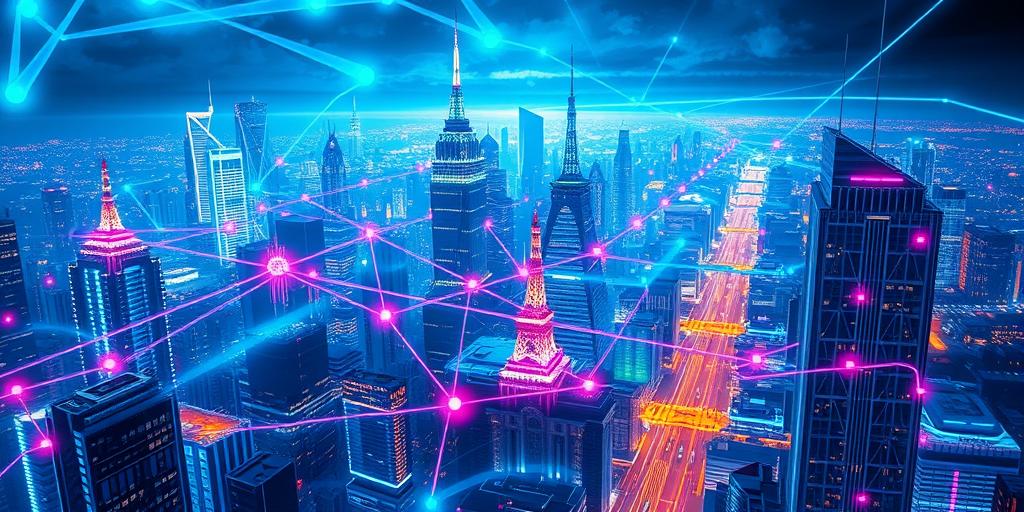Dive into the fascinating world of IoT data flow and connectivity! This isn’t your grandpappy’s internet; we’re talking about billions of devices talking to each other, seamlessly sharing information in real-time. From smart homes to industrial automation, the implications are staggering. Get ready to unlock the secrets behind this technological marvel and understand how it all works! Prepare to be amazed by the power and potential of interconnected devices and the data they generate.
Understanding the Fundamentals of IoT Data Flow
The Internet of Things (IoT) hinges on the ability of devices to communicate and exchange data. This communication isn’t random; it follows specific patterns and protocols to ensure seamless operation. But before we delve into the intricacies, let’s establish a foundational understanding of the key components involved in IoT data flow. Think of it as the digital nervous system of our increasingly connected world. Each device, a neuron, sending signals (data) across the network. Let’s explore these signals and how they’re sent and received.
Devices and Sensors: The Data Sources
The journey of IoT data begins with various devices and sensors embedded in everyday objects and environments. These sensors collect real-time information such as temperature, humidity, location, and various other parameters. This raw data is then transformed into meaningful insights, unlocking the transformative potential of the IoT. This is where the real magic happens; transforming raw sensor data into actionable insights.
Data Transmission: Getting the Data Moving
Once data is collected by sensors, it needs to be transmitted. This transmission happens through various communication protocols such as Wi-Fi, Bluetooth, Zigbee, cellular networks (4G, 5G), and more. The choice of communication protocol depends on factors such as range, power consumption, security, and bandwidth requirements. Understanding these protocols is crucial for designing efficient IoT systems; Choosing the wrong protocol can be a costly mistake!
Data Processing and Analytics: Turning Data into Value
Raw data is often useless on its own. IoT systems incorporate data processing and analytics techniques to transform the collected raw data into meaningful and actionable information. This process often involves cloud-based platforms that receive, process, store, and analyze the data from various sources. Cloud platforms provide scalable and reliable infrastructure for managing large datasets. This is where raw data transforms into the valuable insights that drive efficiency and innovation.
IoT Connectivity Protocols: The Language of Things
The success of any IoT network depends on the effectiveness of its communication protocols. These protocols define how devices communicate with each other and with the cloud. This section explores the most prevalent protocols in the IoT landscape. Selecting the right protocol is critical for a successful project. Here’s a breakdown to help you understand the options.
Wi-Fi: The ubiquitous standard
Wi-Fi remains a mainstay for IoT connectivity, thanks to its wide range, relatively high bandwidth, and established infrastructure. This makes it ideal for many home and office IoT applications. However, its power consumption can be a concern for battery-powered devices.
Bluetooth: Short-range efficiency
Bluetooth is an extremely energy-efficient option, ideal for low-power devices operating within a limited range. It shines in applications like wearable technology and smart home devices where close proximity is expected. Its low power consumption is a significant advantage.
Zigbee: Low-power mesh networks
Zigbee is a protocol known for its energy efficiency and ability to form mesh networks. This means that individual nodes can relay messages for others, extending the reach of the network. This is especially useful for applications such as smart home automation and industrial monitoring, where multiple devices need to interact across a wide area.
Cellular Networks: For long-range communication
Cellular networks such as 4G and 5G are suited for applications requiring wide-area coverage, providing reliable connectivity even for devices far from a traditional Wi-Fi infrastructure. This is crucial for tracking assets, remote monitoring, and other applications requiring long-range communication.
Other Protocols: MQTT and CoAP
Beyond the main players, there are several other protocols playing significant roles, including the Message Queuing Telemetry Transport (MQTT) protocol and the Constrained Application Protocol (CoAP). These protocols are designed to cater to the specific constraints and requirements of low-power and bandwidth-constrained IoT devices.
Security in IoT Data Flow
Security is a paramount concern in IoT systems, as compromised devices could lead to data breaches or physical damage. This section explores the security challenges and solutions in IoT data flow. Protecting your data should always be a top priority.
Data Encryption: Protecting sensitive information
Encryption is a fundamental aspect of securing IoT data. This involves scrambling sensitive data during transmission and storage, making it unreadable to unauthorized individuals. End-to-end encryption is particularly crucial to protect data from interception.
Authentication and Authorization: Verifying device identity
Authentication protocols help verify the identity of devices and users to prevent unauthorized access. Robust authentication mechanisms are critical to preventing malicious actors from accessing and manipulating the system.
Access Control: Limiting access to authorized users
Access control restricts access to sensitive data and system functionalities based on user roles and permissions. This granular control minimizes the impact of potential security breaches. Remember, security in layers provides the best defense.
The Future of IoT Data Flow and Connectivity
The field of IoT data flow and connectivity is constantly evolving. New technologies and protocols are constantly emerging. The future holds many exciting possibilities, including advancements in data security, machine learning integration, improved interoperability, and even more powerful cloud-based analytics. As the number of connected devices explodes, so too will the innovation and sophistication of the underlying infrastructure and protocols that make it all work.
Ready to revolutionize your world with IoT? Explore the possibilities and see how you can leverage the power of seamless data flow today!




